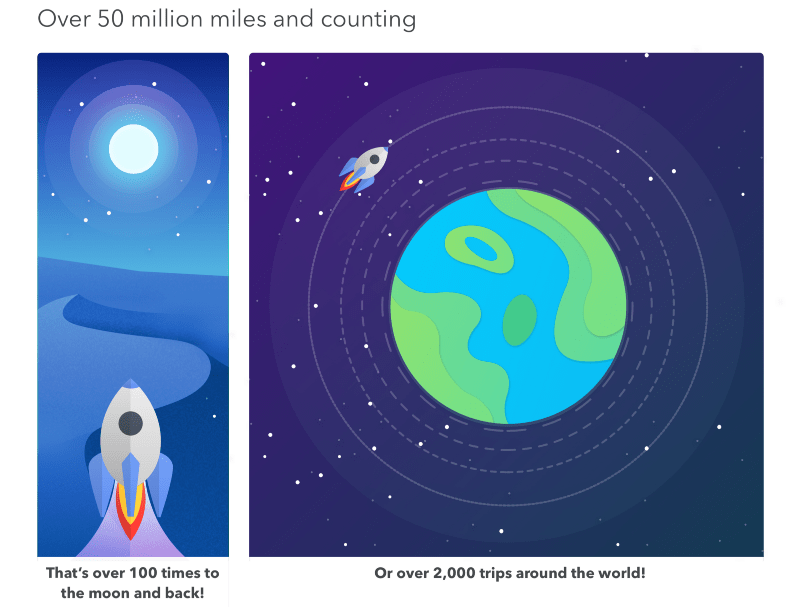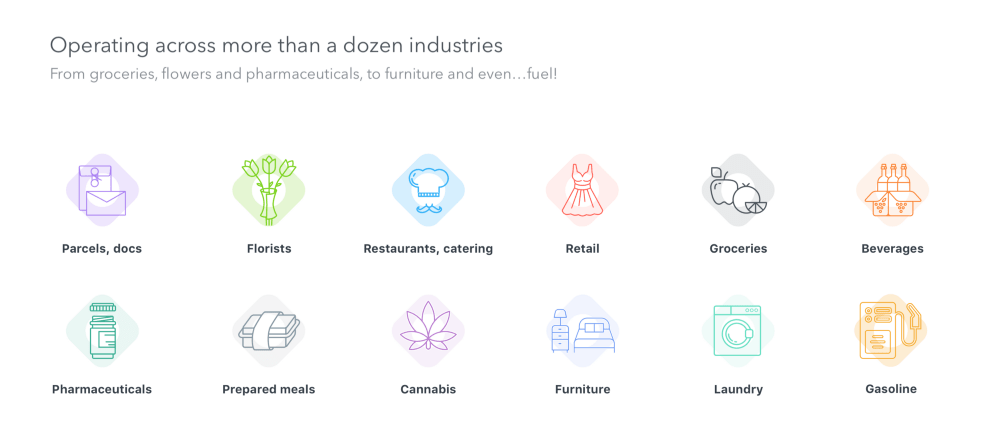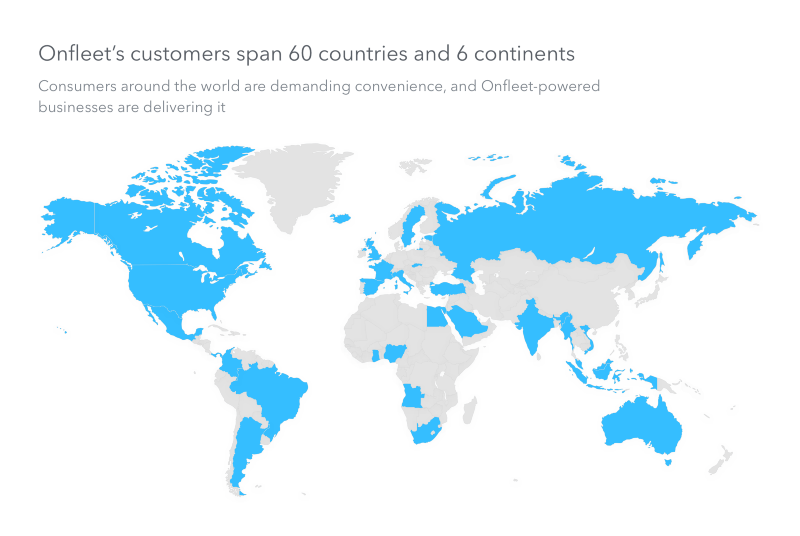
Three years ago today we founded Onfleet to address what we saw as a glaring need for modern, delightful, cloud-based local delivery management software. After spending two years at Stanford University building location-based services tools for last-mile delivery, our founding team developed a passion for tackling complex challenges in the logistics space.
Today, Onfleet is proud to call over 500 innovative businesses, in over 60 countries around the world, our customers. We have powered tens of millions of deliveries, tracking drivers around the world more than 2,000 times over, and we’re only just getting started.



We spend a lot of time thinking about the future so, for our third birthday, we decided to look back at three big lessons we have learned along the way.
Lesson 1: Know what matters most to your customers.
From the moment we launched, we knew we were on to something. Our early customers’ reactions were overwhelmingly positive despite our barebones product, and feedback for new features and functionality started rolling in. We quickly built up our engineering team to stay on top of the requests and ensure we could develop the most powerful, feature-rich last-mile delivery software in the world.
While customers certainly love new features, we soon realized that performance, reliability and stability were always going to be more important than any bell and/or whistle, particularly for a mission-critical operational platform like Onfleet. Flower delivery businesses simply cannot afford any hiccups on Valentine’s Day. Alcohol delivery companies are expected to be the superheroes of the Super Bowl. Restaurant delivery services live or die by their average pickup and delivery times. If our systems went down, or even if they weren’t highly performant, nothing else mattered. One of our earliest product decisions was to set aside 25% of our engineering resources to focus on infrastructure, monitoring and other scalability projects.
A few years ago, doing 1,000 deliveries in a day made us nervous. Today we power thousands an hour, 24/7, without a hitch. Even though we saw over 99.99% uptime in the past year, we continue to invest heavily into Onfleet’s infrastructure, continuously setting the bar higher to ensure we can scale ahead of our growth and the growth of our customers.
Lesson 2: To build a great product, build a great company.
It’s easy to build a decent product with a small team of capable engineers, talented designers, and brilliant product minds. To build a great product, however, you need to build a great company. And to build a great company is anything but easy.
Communicating is easy when it’s just you and your cofounders. Then you raise some funding, hire a few more people and things get a little more complicated. When is the right time to start putting company policies in place? Is it worth sacrificing short-term growth? It’s certainly a balancing act but, in hindsight, it’s never too early to add some structure to your day-to-day operations. The more effort you put into the details early on, the less time you will spend making (and re-making) decisions later.
What are your core values? How do you apply those values to make key business decisions? We spent some time on this early on, and it has been a huge advantage for us as we’ve grown our team and customer base rapidly over the past couple of years.
Equally critical is ensuring you’re always looking at the team and evaluating core competencies and gaps, and making sure you’re continually filling in those gaps as needed. In our case, our founding team was highly technical but lacked design expertise. We knew design was going to be a critical element to our product and company’s success — we needed it in our DNA, so our first hire was an incredibly talented designer. Soon after onboarding our first dozen customers, we realized that we lacked strong sales expertise, so our next hire was a lifelong salesperson — now our VP of Sales. For a B2B SaaS company, sales, success, and support are just as important as the product itself, so don’t neglect these areas for too long.
Lesson 3: Sometimes you need to say “no”.
In the beginning, we celebrated each and every customer that came in the door. They didn’t all fit our target customer profile, but we didn’t care. People were willing to spend money on our product, and of course we wanted as many customers as possible. Plus, we were still figuring out our exact target market.
Over time, however, we realized that having a broad target market makes it difficult to serve anyone well. The product evolves, your customer wishlist expands, and you have to make a real effort when prioritizing your roadmap. We realized that we couldn’t keep 100% of our customers happy 100% of the time with such a broad swath of “delivery companies” using our product, and customer satisfaction was very important to us (and should be for any business that wants to be around for the long term).
Turning down customers that aren’t a good fit can be very difficult, especially if the opportunity is large. However, honing in on our ideal customer profile, building for our early niche market, and saying “no” to good ideas that don’t help us with our target market, is a strategy that has worked well for us so far. Satisfied customers are a key growth channel, so pay close attention to your NPS.
We would like to thank all of our customers, our team, investors, friends, and everyone else who has been part of our journey (willingly or unwillingly) for the past three years. We couldn’t be more excited about what’s in store for Onfleet, and for the entire last-mile delivery space, over the next three years!
Here’s to another 2,000 laps around the Earth! 🚀🌎
